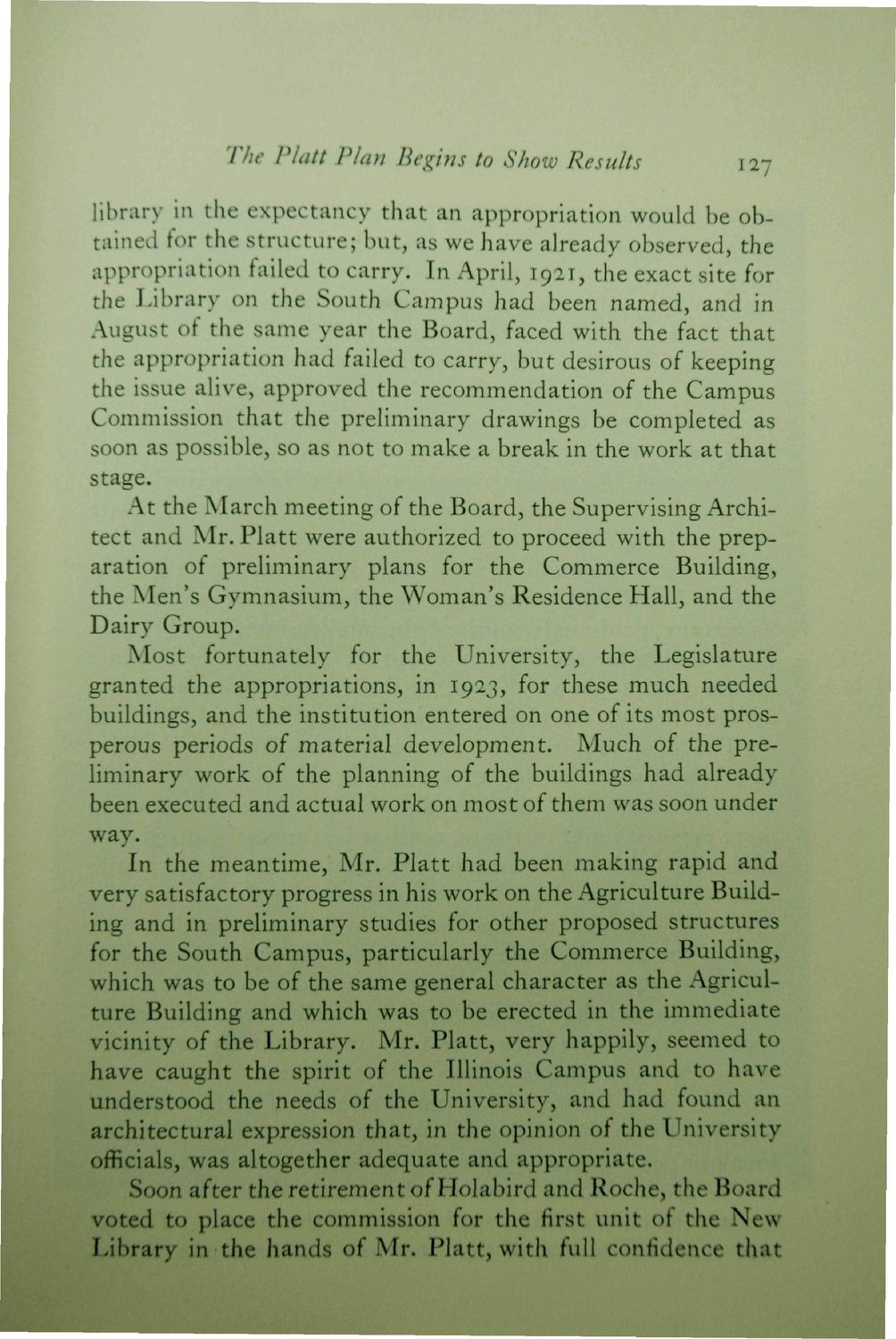| |
| |
Caption: Book - 30 Year Master Plan (Tilton & O'Donnell)
This is a reduced-resolution page image for fast online browsing.

EXTRACTED TEXT FROM PAGE:
The Piatt Plan Begins to Show Results 127 library in the expectancy that an appropriation would be obtained for the structure; but, as we have already observed, the appropriation failed to carry. In April, 1921, the exact site for the Library on the South Campus had been named, and in August of the same year the Board, faced with the fact that the appropriation had failed to carry, but desirous of keeping the issue alive, approved the recommendation of the Campus Commission that the preliminary drawings be completed as soon as possible, so as not to make a break in the work at that stage. At the March meeting of the Board, the Supervising Architect and Mr. Piatt were authorized to proceed with the preparation of preliminary plans for the Commerce Building, the Men's Gymnasium, the Woman's Residence Hall, and the Dairy Group. Most fortunately for the University, the Legislature granted the appropriations, in 1923, for these much needed buildings, and the institution entered on one of its most prosperous periods of material development. Much of the preliminary work of the planning of the buildings had already been executed and actual work on most of them was soon under way. In the meantime, Mr. Piatt had been making rapid and very satisfactory progress in his work on the Agriculture Building and in preliminary studies for other proposed structures for the South Campus, particularly the Commerce Building, which was to be of the same general character as the Agriculture Building and which was to be erected in the immediate vicinity of the Library. Mr. Piatt, very happily, seemed to have caught the spirit of the Illinois Campus and to have understood the needs of the University, and had found an architectural expression that, in the opinion of the University officials, was altogether adequate and appropriate. Soon after the retirement of Holabird and Roche, the Board voted to place the commission for the first unit of the New Library in the hands of Mr. Piatt, with full confidence that
| |